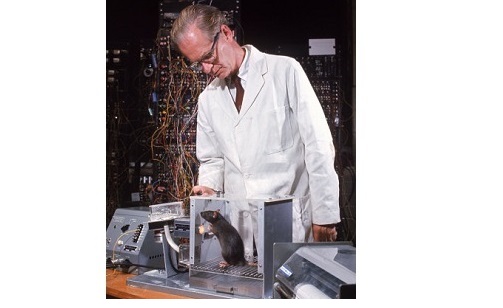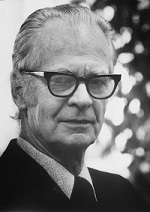- History of Learning Theories
- Learning Theories in Practice
- Behaviorism
- Humanism
- Cognitivism
- Constructivism
Operant Conditioning
Definition
Through operant conditioning, an individual makes an association between a particular behavior and a consequence.
- Operant to refer to any active behavior that operates upon the environment to generate consequences.
- Conditioning refers to “the strengthening of behavior which results from reinforcement.”

Basic Assumptions and Principles
Reinforcement is responsible for response strengthening—increasing the rate of responding or making responses more likely to occur. A reinforcer (or reinforcing stimulus) is any stimulus or event following a response that leads to response strengthening.
- Positive reinforcement involves presenting a favorable stimulus, such as praise or a direct reward which increases the future likelihood of that response occurring in that situation.
- Negative reinforcement involves removing a stimulus, such as criticism or low grades, which increases the future likelihood that the response will occur in that situation.
Punishment decreases the future likelihood of responding to a stimulus. Punishment may involve withdrawing a positive reinforcer or presenting a negative reinforcer following a response.
Stimuli such as food, water, and shelter are called Primary Reinforcers because they are necessary for survival. Secondary Reinforcers are stimuli that become conditioned through their association with primary reinforcers.
Primary Theorist
B. F. Skinner

As a behaviourist, Skinner believed that one should focus on the external, observable causes of behaviour, and internal thoughts and motivations could not be used to explain behaviour.
Classroom Implication and Teaching Strategies
Although Operant conditioning has been discredited by current learning theorists because it cannot adequately explain higher-order and complex forms of learning, the influence continues as operant conditioning principles are commonly applied to enhance student learning and behavior. According to Standridge (2002), the “classic” Skinnerian behaviorist rules include:
- Positive reinforcement (reward): A stimulus presented that will increase behavior, e.g. giving praise to a student
- Negative reinforcement (withdrawal of negative effects): A response that removes something that students find displeasant. E.g. students who regularly turn in homework can skip a graded quiz.
- Positive Punishment: E.g. require a student to stay after class
- Negative Punishment: E.g. remove access to computer after misbehaving
- Extinction (non-enforcement): In particular behavior that was always reinforced through positive stimili will decrease when it is no longer enforced.
Generalization – Once a certain response occurs regularly to a given stimulus, the response also may occur to other stimuli. Generalization can advance skill development across subject areas.
The basic operant conditioning method of behavioral change is shaping – learning by doing with corrective feedback, or differential reinforcement of successive approximations to the desired form or rate of behavior (Morse & Kelleher, 1977).
To shape behavior, one adheres to the following sequence:
- Identify what the student can do now (initial behavior).
- Identify the desired behavior.
- Identify potential reinforcers in the student’s environment.
- Break the desired behavior into small substeps to be mastered sequentially.
- Move the student from the initial behavior to the desired behavior by successively.
- Reinforcing each approximation to the desired behavior.
Resources
Key Works
- Skinner, B. F. (1948). Walden Two. New York: Macmillan.
- Skinner, B. F. (1971). Beyond Freedom and Dignity. New York: Knopf.
